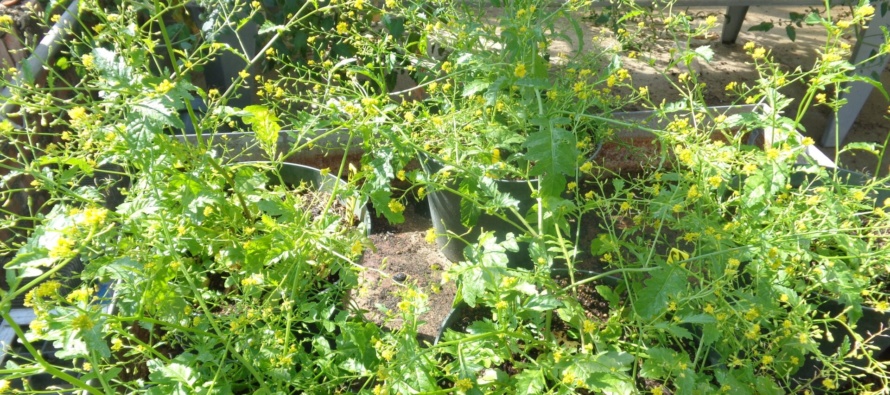Bog Yellowcress

Related Articles
- Calcium and Magnesium For Mississippi Crops 1
- March 11 Precision Agriculture Workshop 0
- Ground Speed Affects Spray Droplet Deposition 0
Latest Tweets
Bog Yellowcress
Weed flora of Mississippi
Prepared by
Taghi Bararpour and Jason Bond
Family: Brassicaceae
Genus: Rorippa Species: palustris
History: Bog yellowcress is a species of flowering plant in the mustard (Brassicaceae) family. It is widespread and native to parts of Africa and much of Asia, Europe and Eurasia, North America, and the Caribbean. It can also be found in other parts of the world as an introduced species and a common weed, for example, in Australia and South America.
Life Cycle: Taprooted annual or biennial. Occasionally, a weak perennial. It is variable in appearance.
Special Characteristics: This plant flowers are seed-propagated and bears fruits from June to September. Newly ripened seed have a germination capacity of 21 to 100% after overwintering in soil at a depth of 2 cm (<1 inch). Mass seedlings appear from the end of spring until the beginning of autumn. Additionally, seedlings emerging in summer and autumn overwinter. More than one raceme may develop from a single stem. This plant spreads by reseeding itself.
Roots: Taproot that is shallow and branching.
Stems: Erect and branched, attaining a maximum height of just over 1 m (>3 feet).
Leaves: Alternate leaves up to 30 cm (12 inches) long and have toothed to deeply lobed edges.
Flower: Each flower is about 3 mm (0.01 inch), consisting of four yellow petals, four greenish yellow sepals, several stamens with yellow or light brown anthers, and a pistil with a stout style. Inflorescence is a raceme of mustard-like flowers with spoon-shaped yellow petals each a few millimeters in length. The flowers attract small halictid bees, syrphid flies, and other kinds of flies. The bees suck nectar and collect pollen, while the flies suck nectar and feed on the pollen.
Seeds / Fruit: The fruit is a dehiscent and smoothly valved silicle, up to a centimeter long, and containing anywhere from 20 to 90 small seed.
Common names: Numerous (bog marshcress, bog yellowcress, common yellowcress, marsh yellowcress, marshcress or marsh cress, and yellow cress).
Economic significance: It is a typical segetal weed in the zone of coniferous forests and occurs among different agricultural crops growing on very wet soil, in fallow areas, in vegetable gardens, and in hayfields.





Let me tell You a sad story ! There are no comments yet, but You can be first one to comment this article.
Write a comment